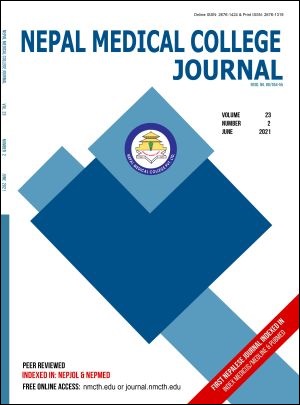Evaluation of Direct Chest Circumference Measurement as an Efficient Tool in the Reduction of Radiation Dose in Multi-Slice Computerized Tomography of Chest- A Suggestion for Radiographers
DOI:
https://doi.org/10.3126/nmcj.v23i2.38503Keywords:
Non contrast computerized tomography, COVID-19, CT Dose Index, dose length product, body mass indexAbstract
Non-contrast computerized tomography (NCCT) is in rampant use in daily practice for the diagnosis of various chest diseases. In the era of COVID-19 pandemic, the use of chest NCCT has increased many fold. The reason was because it will resolve many issues and quick diagnosis can be made. The same was also required to see the behavior of the disease as well as in the follow-up. Basically two parameter are in use to described the amount of radiation dose received by the patient in volumetric CT. These are, one is CT Dose Index (CTDIvol) & its unit is mGy, and the second is dose length product (DLP). With normal pitch factor i.e. 1, the CTDIw is use on the description of CTDIvol. Multiplication of scan length and CTDIvol parameter is known as Dose Length Product (DLP). There was much concern about the radiation dose received by the individual. A total of twenty-six individuals were studied. The measurement of direct chest circumference before each CT chest examination and correlation of CT chest protocol parameter in combination use was an effective tool to reduce the amount of radiation dose in patients. Chest circumference values can also be correlated with body mass index (BMI) values for more accuracy in the reduction of radiation dose. Lower chest circumference patients should be irradiated with the least amount of radiation dose and so on.
Downloads
Downloads
Published
How to Cite
Issue
Section
License
Copyright (c) 2021 Nepal Medical College Journal

This work is licensed under a Creative Commons Attribution 4.0 International License.
This license enables reusers to distribute, remix, adapt, and build upon the material in any medium or format, so long as attribution is given to the creator. The license allows for commercial use.




